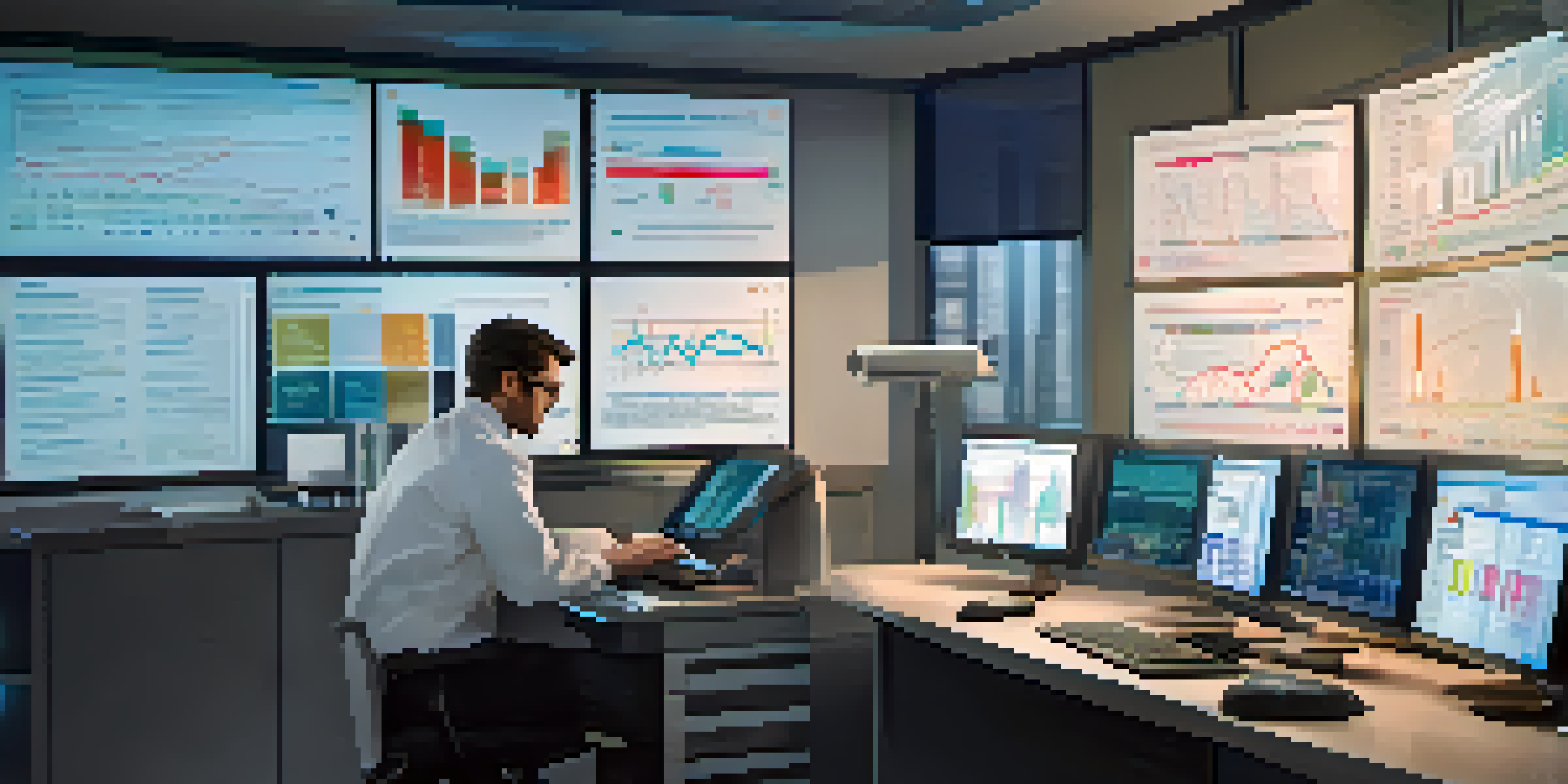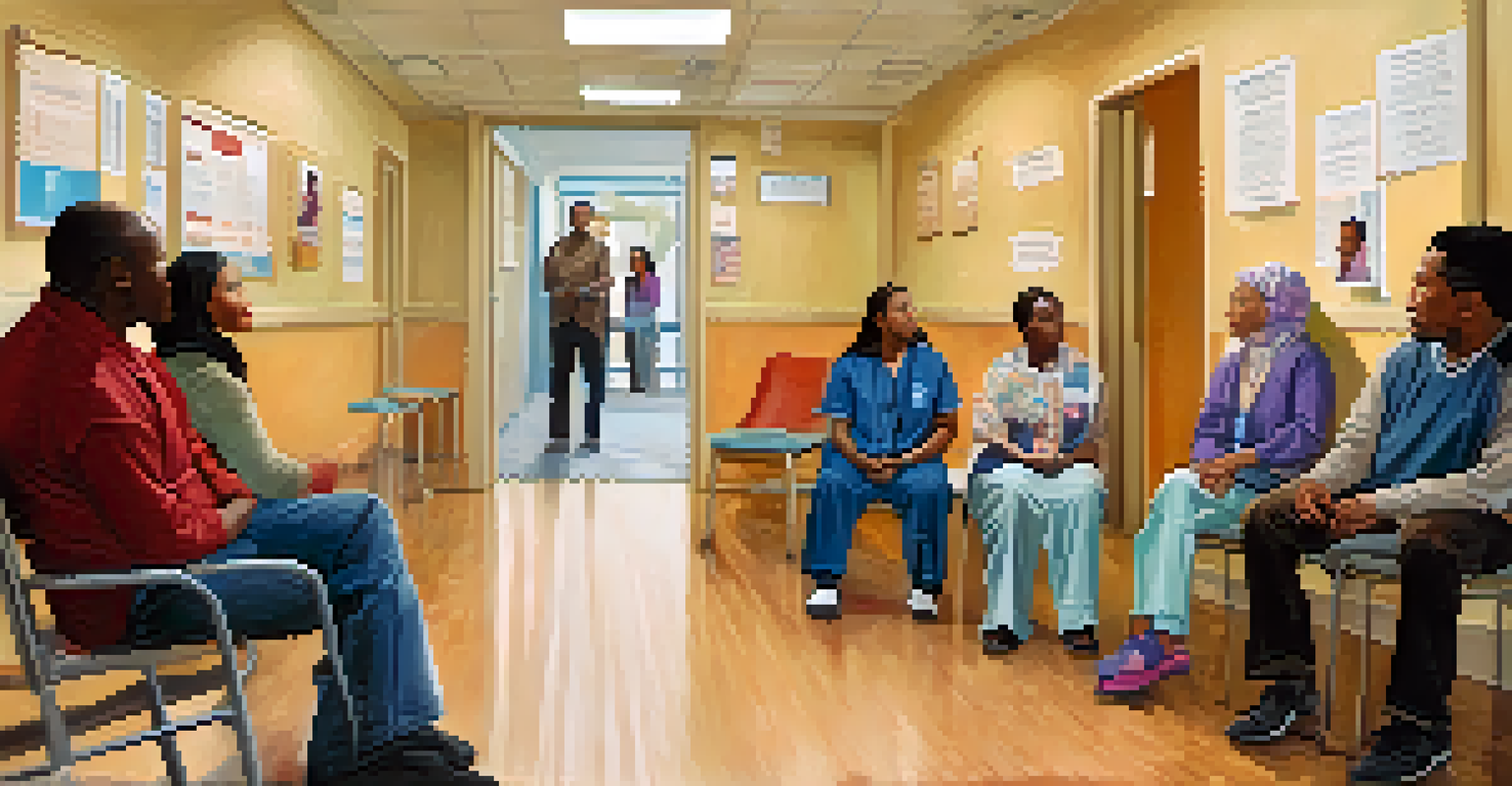The Role of Pharmacovigilance in Drug Safety Monitoring

What is Pharmacovigilance and Its Purpose?
Pharmacovigilance is the science of monitoring the safety of drugs after they are approved for use. Its primary purpose is to identify and evaluate adverse effects or any other drug-related problems that may arise during treatment. By collecting and analyzing data on drug safety, pharmacovigilance helps ensure that medications remain safe and effective for patients.
The safety of the public is the highest priority in the development and regulation of medicines.
This process is crucial because even after extensive testing, unforeseen side effects can occur once a drug is on the market. These can range from mild reactions to severe complications. Thus, pharmacovigilance acts as a safety net, continually assessing the risk-benefit profile of medications as more data becomes available.
In essence, pharmacovigilance safeguards public health by making sure that any potential risks associated with a drug are promptly identified and addressed, ensuring that patients can trust the medications they take.
The Importance of Reporting Adverse Drug Reactions (ADRs)
One of the key components of pharmacovigilance is the reporting of adverse drug reactions (ADRs). When patients experience negative effects from a medication, it is vital for healthcare professionals and patients to report these incidents. This information contributes to a larger database that helps in understanding drug safety profiles.

ADRs can vary widely, and their impact can sometimes go unnoticed until more data is collected. For example, a common over-the-counter pain reliever may cause rare but serious side effects in a small percentage of users. By continuously monitoring and reporting these reactions, pharmacovigilance can identify trends and potential safety signals.
Pharmacovigilance Ensures Drug Safety
Pharmacovigilance is essential for monitoring the safety of drugs post-approval, identifying adverse effects, and safeguarding public health.
Ultimately, reporting ADRs not only aids regulatory authorities in making informed decisions about drug usage but also empowers patients by contributing to the collective knowledge about medication safety.
How Pharmacovigilance Works in Practice
Pharmacovigilance operates through a structured process involving data collection, analysis, and action. First, healthcare providers, patients, and pharmaceutical companies gather information on adverse events linked to drug use. This data is then submitted to regulatory agencies like the FDA or EMA, creating a comprehensive safety database.
Pharmacovigilance is not just about detecting side effects; it’s about ensuring the benefits of a drug outweigh its risks.
Once the data is collected, it undergoes rigorous analysis to identify potential safety signals. This involves looking for patterns or unexpected trends that may suggest a drug is causing harm. If a significant risk is identified, regulatory bodies can take action, which might include updating drug labels, issuing warnings, or even withdrawing a drug from the market.
This systematic approach ensures that drug safety is continually evaluated, helping to protect patients from potential harm associated with their medications.
The Role of Regulatory Authorities in Pharmacovigilance
Regulatory authorities play a pivotal role in pharmacovigilance by overseeing the safety of drugs and ensuring compliance with safety regulations. Agencies like the FDA, EMA, and others are responsible for reviewing safety data, assessing risks, and taking necessary actions to protect public health. Their expertise is crucial in determining whether a drug remains safe for use.
These authorities also provide guidelines for reporting adverse events, ensuring that healthcare professionals and patients understand the importance of sharing their experiences. By fostering a culture of safety reporting, they enhance the quality of data available for analysis.
Importance of Reporting ADRs
Reporting adverse drug reactions (ADRs) is crucial as it contributes to understanding drug safety and helps regulatory authorities make informed decisions.
Moreover, regulatory bodies work closely with pharmaceutical companies to conduct post-marketing studies and monitor ongoing drug safety, strengthening the overall pharmacovigilance framework.
Challenges in Pharmacovigilance
Despite its importance, pharmacovigilance faces several challenges that can hinder its effectiveness. One significant issue is underreporting of adverse drug reactions. Many healthcare professionals and patients may not be aware of the importance of reporting or may not have the time to do so, leading to gaps in data.
Another challenge is the complexity of analyzing large volumes of data. As more drugs enter the market, the sheer amount of information can be overwhelming. This complexity makes it difficult to identify safety signals promptly, potentially putting patients at risk.
Finally, there is also the challenge of balancing drug innovation with safety monitoring. While new medications can provide essential benefits, ensuring their safety requires ongoing vigilance and resources.
The Impact of Technology on Pharmacovigilance
Technology has significantly transformed the landscape of pharmacovigilance, making it more efficient and effective. The advent of electronic health records and real-time data analysis allows for quicker reporting and evaluation of adverse events. With these tools, healthcare providers can easily track patient outcomes and identify potential safety issues.
Furthermore, artificial intelligence and machine learning are being utilized to analyze vast datasets, helping to detect safety signals faster than traditional methods. These technologies can sift through millions of records to identify patterns that may indicate a drug's risk.
Technology Enhances Monitoring Efforts
The integration of technology, including AI and real-time data analysis, significantly improves the efficiency and effectiveness of pharmacovigilance.
Overall, the integration of technology into pharmacovigilance not only enhances the speed and accuracy of safety monitoring but also improves patient outcomes by ensuring timely action when risks are identified.
Future Directions in Pharmacovigilance
As the field of pharmacovigilance continues to evolve, several future directions are emerging. One key trend is the move towards more patient-centered approaches, where patients themselves play an active role in reporting and monitoring drug safety. Empowering patients with the tools and knowledge to report their experiences can significantly enhance data collection.
Additionally, there is a growing emphasis on global collaboration in pharmacovigilance. With medications crossing borders, sharing safety data across countries becomes essential for comprehensive monitoring. International partnerships can lead to better understanding and management of drug safety issues on a global scale.

Finally, as new therapies such as gene therapies and personalized medicine emerge, pharmacovigilance must adapt to address the unique challenges these innovations present, ensuring safety in an increasingly complex landscape.